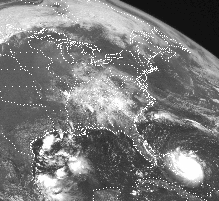 |
 |
 |
 |
 |
 |
 |
 |
 |
 |
 |
 |
 |
 |
 |
 |
 |
 |
 |
 |
 |
 |
 |
 |
 |
 |
 |
 |
 |
 |
 |
 |
 |
 |
 |
|
|
 |
|
|
|
 |
|
|
|
 |
|
|
|
 |
|
|
|
The purpose of this document is to, through the use of case histories, analyze the current state of affairs and important issues that still need to be addressed in the development of the United States Disaster Relief Infrastructure of the 1990's. Related legislation and governmental programs will be identified, and historical problems found within the disaster recovery infrastructure will be highlighted via the exploration of four recent U.S. disaster case studies: the bombing of the World Trade Tower in 1992; the Chicago Flood in 1993; Hurricane Andrew in 1993; and the Great Flood of 1993. Suggestions for further improvement to the current system will also be tendered. |
|
|
|
It had been noted by this author that exellent books were currently in print which chose to analyze how information mismanagement and infrastructure miscommunications directly or indirectly caused human misery, whether through political or business misfortune. One of the best which directly inspired this paper was **Great Information Disasters** by Dr. Forest Horton and Dr. Dennis Lewis. Their case study, of the hurricane which hit Southern England on the night of the 15th/16th of October 1987, was a great help when this author attempted to analyze the similar disaster of Hurricane Andrew in 1993. (In both cases the warning systems were inadequate, leading to classic information disasters.) But absent in the available literature was any document which specifically chose via case histories to look directly at the historical and current United States disaster relief infrastructure. |
|
|
|
It had also been observed that several blatent problems in the U.S. disaster recovery infrastructure were revealed within the 1992-1993 time period when the four cases featured in this paper occurred. This author then endeavored to try to fill that particular gap in the literature. It was the author's objective that this research should exhist as a convenient summary of the current U.S. Disaster Relief Infrastructure system's condition, of the disasters described, and that some good or enlightenment of the disaster relief structures might be obtained through analysis and comparison. |
|
|
|
This study was accomplished exclusively via qualitative research methods, using purely unobtrusive measures by the gathering of information through previously published data. This included government publications such as Congressional Reports, insurance reports, newspaper articles and documents obtained electronically through the internet. One strength of this methodology was that it is naturalistic, in that no attempt was made to manipulate the research settings. The major weakness of this methology is the subjectiveness by which materials were selected by this author, which could possibly be looked upon as being biased. For this, the author apologizes in advance. |
|
|
|
The research design was non-experimental, in that it was almost impossible to control all the biases or to protect the factual accuracy of internal validity . This is because the veracity of the published document sample is assumed and impossible to completely verify. |
|
|
|
This study can also loosely be considered an example of content analysis, as it is does examine classes of social artifacts in an unobtrusive manner and according to Philip Stone in his article **The General Inquirer: A Computer Approach to Content Analysis** (p.5), as "...any research technique for making inferences by systematically and objectively identifying specified characteristics within text." |
|
|
|
The content analysis method may by definition be applied to almost any form of communication that has been recorded in some form (ie: written documents; audio and video tapes; paintings; poems; songs; etc.). Written documents may also include magazines, newspapers, speeches, legal documents such as laws, bills or constitutions. In this case the sampling would be considered systematic and unrandom in nature. Latent content, or underlying meanings were handled qualitatively in that entire samples of paragraphs were observed to determine an overall assessment. Where this study differed from content analysis was that it was purely qualitative and made no effort in determining quantitative data. A content analysis study normally would have contained six major steps of which the last four tend toward the quantitative in nature. These steps could be summarized from (Babbie) literature as : (1)extraction of data; (2) classification of data ; (3) weighing of data; (4) determination of criteria in assessment of data; (5) establishment of reliability measures; and (6) the checking of inferences. |
|
|
|
Data collection for this paper was gradual, collected over a time period between the fall of 1993 and the spring of 1995, with much debt owed to the electronic resources obtained at Syracuse University, and through the generosity of the Army Corp of Engineers. |
|
|
|
ENDNOTES: |
|
|
|
**Great Information Disasters: Twelve prime examples of how information mismanagement led to human misery, political misfortune and business failure. *** edited by Dr. Forest W. Horton, Jr. and Dr. Dennis Lewis (ASLIB, the Association for Information Management: London) 1991 pp.107-113 |
|
|
|
 |
|
|
|
(Updated 9/02/03 D.J. Russell) |
|
|
|
 |
|
|
|
|
|
|
|
|

|
|
|
|
|
|
|
|
 |
|
|
|
|
|
|
 |
|
|
|
|
 |
|
|
|



